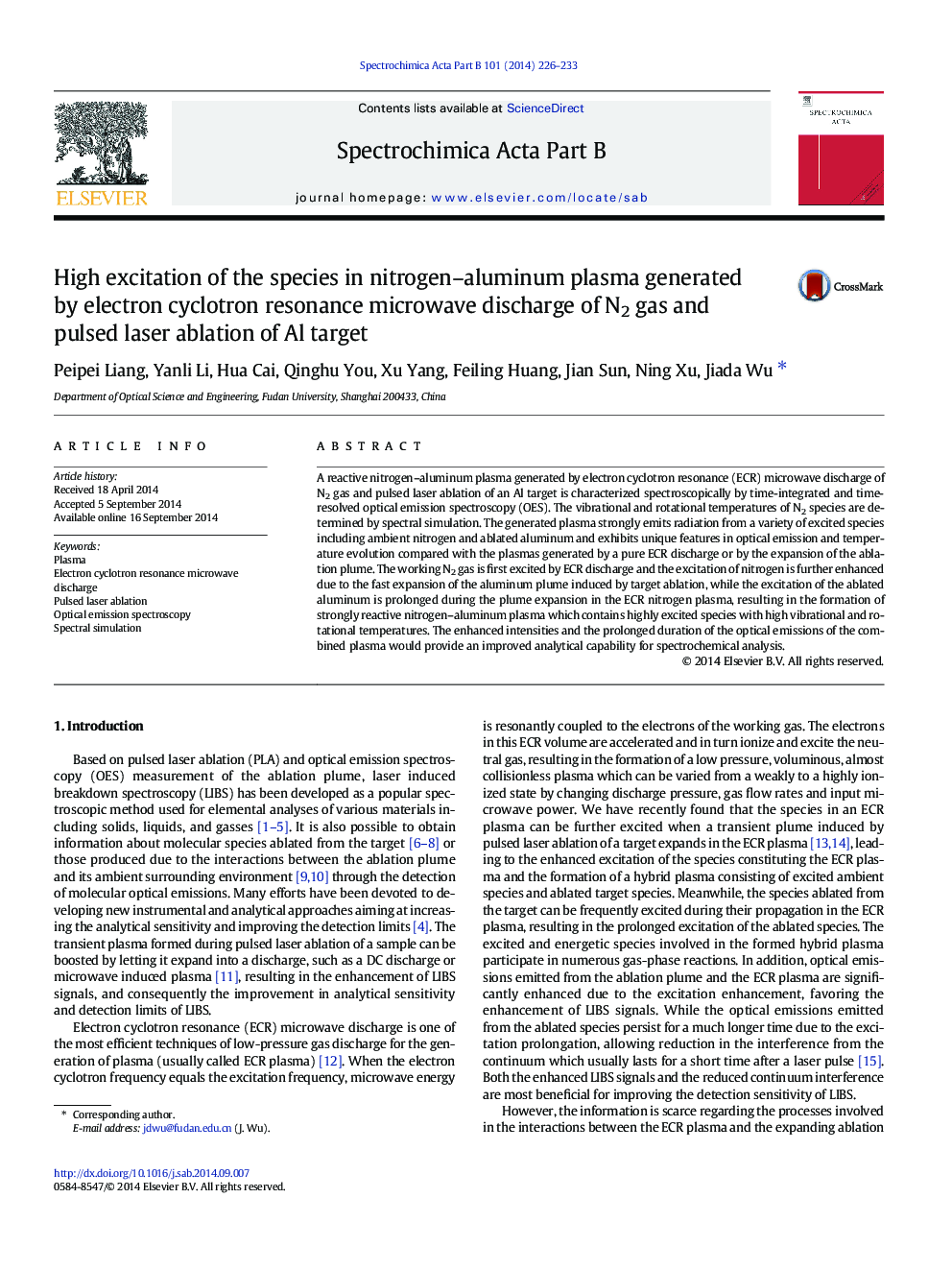| Article ID | Journal | Published Year | Pages | File Type |
|---|---|---|---|---|
| 7674514 | Spectrochimica Acta Part B: Atomic Spectroscopy | 2014 | 8 Pages |
Abstract
A reactive nitrogen-aluminum plasma generated by electron cyclotron resonance (ECR) microwave discharge of N2 gas and pulsed laser ablation of an Al target is characterized spectroscopically by time-integrated and time-resolved optical emission spectroscopy (OES). The vibrational and rotational temperatures of N2 species are determined by spectral simulation. The generated plasma strongly emits radiation from a variety of excited species including ambient nitrogen and ablated aluminum and exhibits unique features in optical emission and temperature evolution compared with the plasmas generated by a pure ECR discharge or by the expansion of the ablation plume. The working N2 gas is first excited by ECR discharge and the excitation of nitrogen is further enhanced due to the fast expansion of the aluminum plume induced by target ablation, while the excitation of the ablated aluminum is prolonged during the plume expansion in the ECR nitrogen plasma, resulting in the formation of strongly reactive nitrogen-aluminum plasma which contains highly excited species with high vibrational and rotational temperatures. The enhanced intensities and the prolonged duration of the optical emissions of the combined plasma would provide an improved analytical capability for spectrochemical analysis.
Related Topics
Physical Sciences and Engineering
Chemistry
Analytical Chemistry
Authors
Peipei Liang, Yanli Li, Hua Cai, Qinghu You, Xu Yang, Feiling Huang, Jian Sun, Ning Xu, Jiada Wu,
